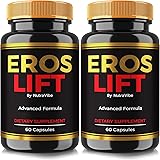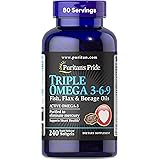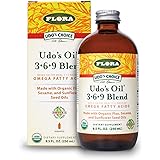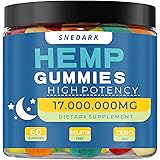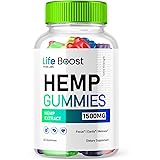While the video above offers a visual and auditory experience, understanding high cholesterol often requires a deeper dive into its nuances. It’s a tricky condition, often dubbed a “silent killer,” precisely because it typically presents no noticeable symptoms. Many people live with elevated cholesterol levels for years, completely unaware, until a serious health event occurs. However, your body isn’t entirely silent; it might be trying to tell you something through subtle, often indirect, signals if you know where to look. This article aims to shed light on those less obvious indicators, encouraging proactive health management.
Imagine if your car had a warning light that only came on *after* the engine had significant, irreversible damage. That’s often how high cholesterol operates. It quietly contributes to plaque buildup in your arteries, a process called atherosclerosis, without immediate discomfort. But understanding what cholesterol is and how it affects your body is the first step toward recognizing potential issues before they escalate.
Understanding High Cholesterol: The Basics
Cholesterol is a waxy, fat-like substance found in all your body’s cells. It’s essential for building healthy cells, but too much of it can be problematic. Your body needs two main types of cholesterol:
- Low-Density Lipoprotein (LDL) Cholesterol: Often called “bad” cholesterol, high levels of LDL contribute to plaque buildup in your arteries, narrowing them and restricting blood flow.
- High-Density Lipoprotein (HDL) Cholesterol: Known as “good” cholesterol, HDL helps remove excess cholesterol from your arteries, transporting it back to the liver for removal from the body.
In addition, triglycerides are another type of fat in your blood. High levels of triglycerides, especially when combined with high LDL or low HDL, can also increase your risk of heart disease.
When these levels are out of balance, particularly with elevated LDL, the risk of atherosclerosis increases significantly. This hardening and narrowing of the arteries can lead to various cardiovascular problems over time.
The Silent Threat of High Cholesterol
The insidious nature of high cholesterol lies in its lack of direct warning signs. Unlike a headache or a fever, there’s no specific pain or discomfort directly attributable to elevated cholesterol levels themselves. This is why regular blood tests are so crucial for diagnosis. Without a blood panel, you could be living with a significant risk factor for heart attack and stroke without ever knowing.
However, while the cholesterol itself doesn’t cause symptoms, its long-term effects on your body can. Over years, the plaque accumulation can reach a point where it starts to impact organ function or trigger acute events. It’s at this stage that your body might finally present symptoms, but these are often signs of severe complications rather than just high cholesterol.
Subtle (and Often Indirect) Signs Your Body Might Be Giving
While truly direct high cholesterol symptoms are rare, certain physical manifestations or symptoms of associated conditions can sometimes be linked to very high levels or prolonged plaque buildup. It’s important to remember that these are not definitive indicators of high cholesterol alone, but they warrant investigation.
Rare Direct Physical Manifestations
For individuals with extremely high cholesterol, often due to genetic conditions like familial hypercholesterolemia, certain visible signs can appear:
- Xanthelasma: These are yellowish, waxy patches that typically appear around the eyelids. Imagine small, soft bumps, often symmetrical, that are actually cholesterol deposits under the skin.
- Xanthomas: Similar to xanthelasma, but these fatty deposits can occur on other parts of the body. They might appear as firm nodules on tendons (especially Achilles and finger tendons), elbows, knees, or even buttocks.
- Corneal Arcus: A white, gray, or blue ring visible around the outer edge of the cornea (the clear front part of the eye). While common and usually harmless in older adults, its appearance in individuals under 40 can be a sign of very high cholesterol levels.
These direct signs are uncommon and usually indicate significantly elevated levels. Most people with high cholesterol will never experience them.
Indirect Symptoms: When High Cholesterol Leads to Complications
More often, the “symptoms” people experience are actually a result of the complications caused by prolonged high cholesterol and atherosclerosis. These complications typically involve reduced blood flow to vital organs:
- Peripheral Artery Disease (PAD): When plaque narrows arteries supplying blood to your limbs, especially your legs, you might experience PAD. Imagine a feeling of cramping, pain, or tiredness in your leg muscles while walking or exercising, which subsides with rest. This is called claudication. Other signs can include numbness or weakness in the legs, coldness in the lower leg or foot, or sores on the feet/legs that heal slowly.
- Coronary Artery Disease (CAD): If plaque builds up in the arteries supplying your heart, it can lead to CAD. Picture your heart muscles struggling for oxygen. This might manifest as angina (chest pain, tightness, or pressure), shortness of breath, or a feeling of fatigue, especially during physical activity. These are warning signs that your heart isn’t getting enough blood.
- Stroke or Transient Ischemic Attack (TIA): Atherosclerosis in the arteries leading to your brain can increase the risk of a stroke or a “mini-stroke” (TIA). Imagine a sudden disruption of blood flow to part of your brain. Symptoms can include sudden numbness or weakness on one side of your body, difficulty speaking or understanding speech, sudden confusion, trouble seeing in one or both eyes, or a sudden, severe headache.
- Pancreatitis: In cases of extremely high triglyceride levels (another type of fat in the blood often associated with high cholesterol), inflammation of the pancreas can occur. This typically causes severe abdominal pain, nausea, and vomiting.
These are serious medical conditions, and experiencing any of these symptoms warrants immediate medical attention. They underscore the importance of early detection and management of high cholesterol.
Why Regular Check-ups are Your Best Defense
Given the largely asymptomatic nature of high cholesterol, the most reliable way to detect it is through routine blood tests, specifically a lipid panel. This simple test measures your total cholesterol, LDL, HDL, and triglyceride levels. Your doctor can assess these numbers and determine your risk profile.
Imagine going for regular oil changes for your car, even if it’s running smoothly. It’s preventative maintenance. Similarly, regular health check-ups and lipid screenings are essential, especially as you age or if you have risk factors like a family history of heart disease, obesity, or diabetes. These screenings allow for early intervention, long before any subtle or indirect symptoms of complications might arise.
Taking Action: Beyond Recognizing the Signs
Once you understand your cholesterol levels, you and your doctor can develop a plan. This might involve lifestyle modifications, such as adopting a heart-healthy diet, increasing physical activity, maintaining a healthy weight, and quitting smoking. For some, medication may also be necessary to help manage high cholesterol effectively. The goal is to reduce your risk of serious cardiovascular events.
The journey to managing high cholesterol begins with awareness. Don’t wait for your body to send alarming signals through complications. Be proactive, get regular check-ups, and talk to your healthcare provider about your high cholesterol symptoms risk factors and what steps you can take to protect your heart health.



